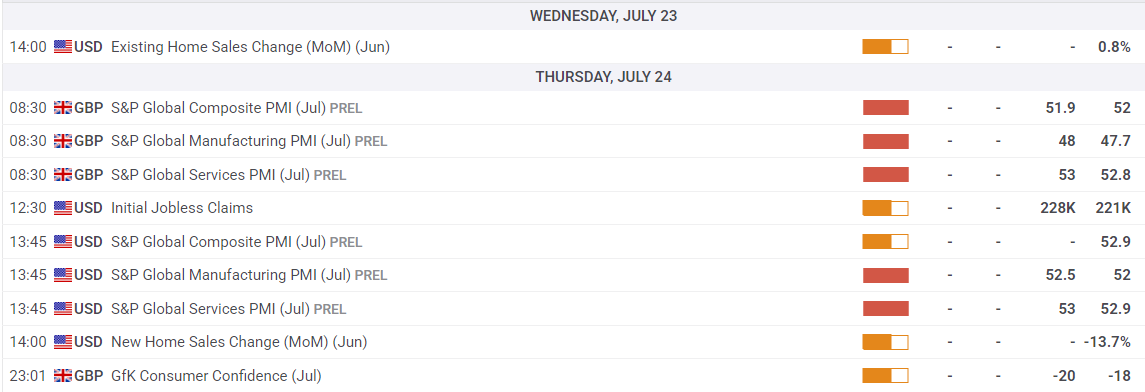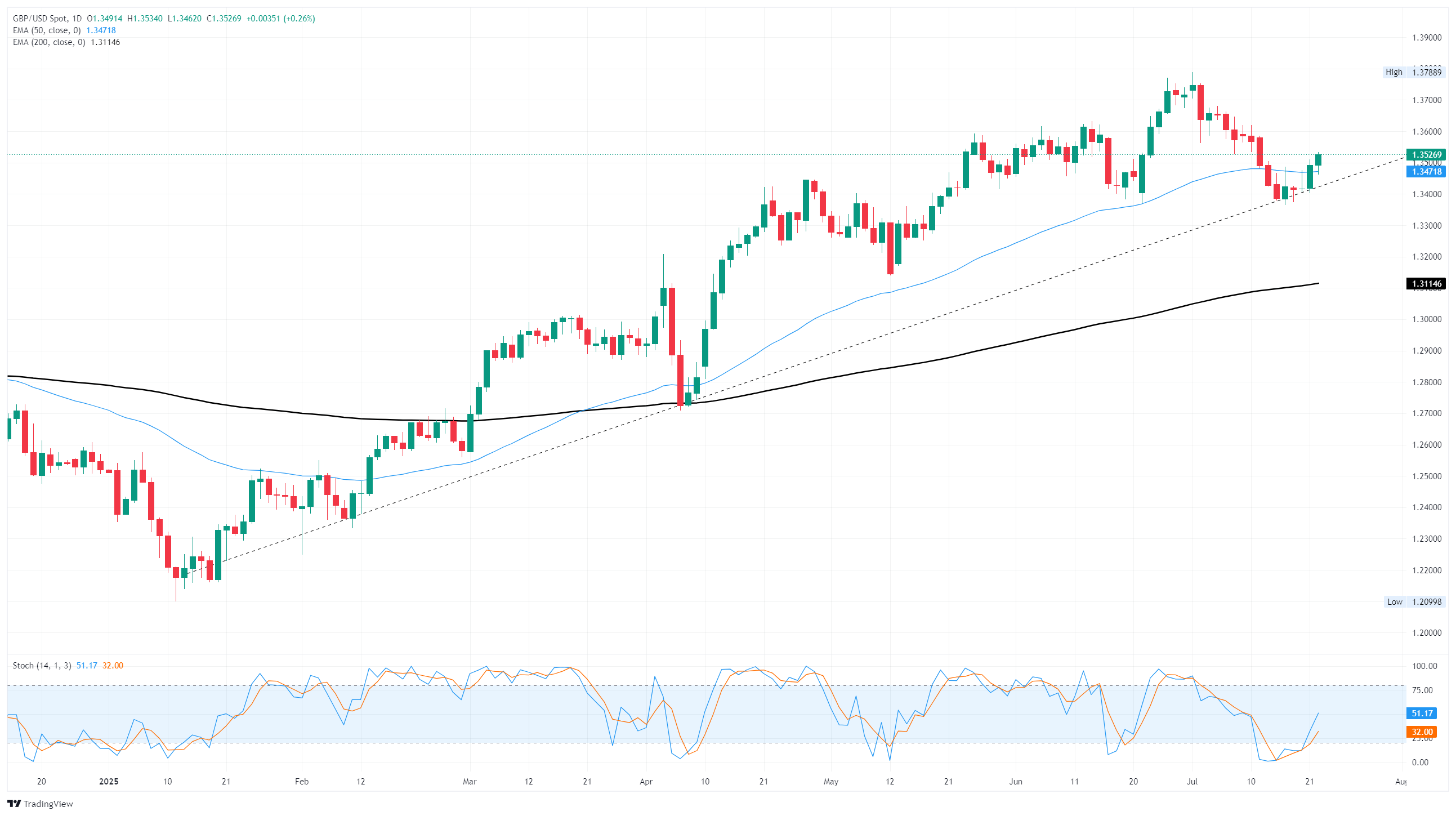GBP/USD continues bullish bounce as Greenback continues to weaken
- GBP/USD climbed back above 1.3500 for the first time in over a week.
- The US Dollar continues to retreat, bolstering Cable bids.
- Double-header PMI prints loom ahead on Thursday as trade and Fed headlines continue.
GBP/USD rose for a second straight day on Tuesday, lifted by a general weakening in global Greenback markets. The US Dollar (USD) continues to take a beating as investors grow weary of United States (US) President Donald Trump targeting Federal Reserve (Fed) Chair Jerome Powell, and fears of the Fed’s political autonomy being undermined are kicking the supports out from beneath the Greenback.
President Trump continues to campaign for the removal of Fed Chair Powell. Lacking the legal power to directly interfere with Fed staff, the Trump administration is actively trying to build a case out of anything that would give them an avenue to replace the Fed head. The Trump team is looking for a Fed pick that will be more friendly to sharply lowering interest rates, even as inflationary pressures from tariffs continue to simmer away near the surface.
Wednesday brings a relative lull on the data docket with little to no meaningful schedule releases, leaving headlines to drive market flows. Cable traders will be hunkering down for the wait to Thursday, when back-to-back Purchasing Manager Indexes for both the UK and the US will drop. Manufacturing and Services PMI components are expected to tick slightly higher on both sides of the Atlantic.

GBP/USD price forecast
Another step higher for the Cable puts GBP/USD bids back above the 1.3500 handle for the first time in a little over a week. The Greenback’s near-term weakness has been a boon for Pound Sterling bulls, drawing a clean technical bounce from a rising trendline in the 1.3400 region.
GBP/USD daily chart

Pound Sterling FAQs
The Pound Sterling (GBP) is the oldest currency in the world (886 AD) and the official currency of the United Kingdom. It is the fourth most traded unit for foreign exchange (FX) in the world, accounting for 12% of all transactions, averaging $630 billion a day, according to 2022 data. Its key trading pairs are GBP/USD, also known as ‘Cable’, which accounts for 11% of FX, GBP/JPY, or the ‘Dragon’ as it is known by traders (3%), and EUR/GBP (2%). The Pound Sterling is issued by the Bank of England (BoE).
The single most important factor influencing the value of the Pound Sterling is monetary policy decided by the Bank of England. The BoE bases its decisions on whether it has achieved its primary goal of “price stability” – a steady inflation rate of around 2%. Its primary tool for achieving this is the adjustment of interest rates. When inflation is too high, the BoE will try to rein it in by raising interest rates, making it more expensive for people and businesses to access credit. This is generally positive for GBP, as higher interest rates make the UK a more attractive place for global investors to park their money. When inflation falls too low it is a sign economic growth is slowing. In this scenario, the BoE will consider lowering interest rates to cheapen credit so businesses will borrow more to invest in growth-generating projects.
Data releases gauge the health of the economy and can impact the value of the Pound Sterling. Indicators such as GDP, Manufacturing and Services PMIs, and employment can all influence the direction of the GBP. A strong economy is good for Sterling. Not only does it attract more foreign investment but it may encourage the BoE to put up interest rates, which will directly strengthen GBP. Otherwise, if economic data is weak, the Pound Sterling is likely to fall.
Another significant data release for the Pound Sterling is the Trade Balance. This indicator measures the difference between what a country earns from its exports and what it spends on imports over a given period. If a country produces highly sought-after exports, its currency will benefit purely from the extra demand created from foreign buyers seeking to purchase these goods. Therefore, a positive net Trade Balance strengthens a currency and vice versa for a negative balance.
